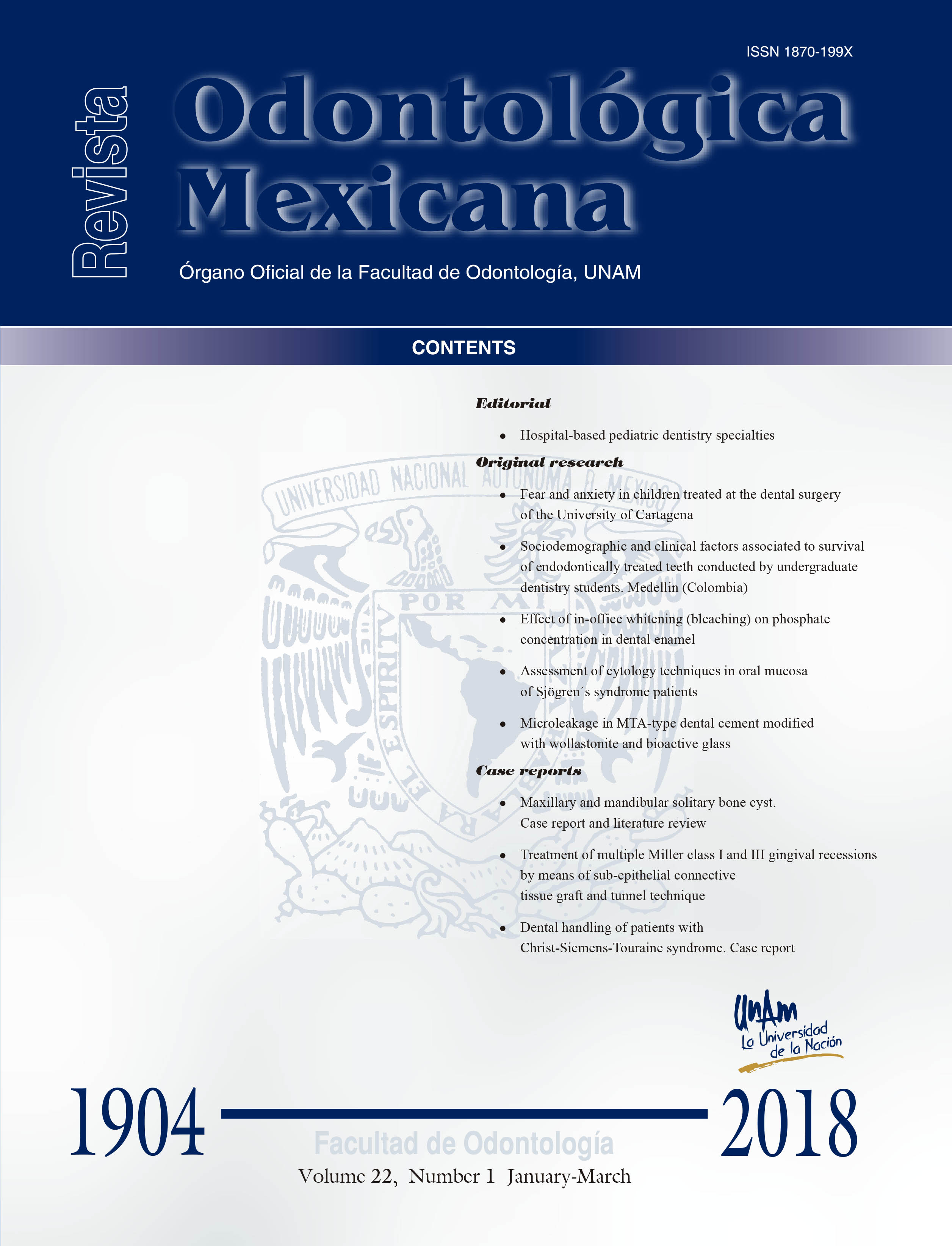Microleakage in MTA-type dental cement modified with wollastonite and bioactive glass
Contenido principal del artículo
Resumen
Retro-filling material such as MTA (mineral trioxide aggregate) should be biocompatible, easy to handle, with low or nil solubility as well as dimensionally stable in order to avoid filtrations associated to volumetric changes. Objective: To measure filtration in a MTAtype dental cement modified with wollastonite and bioactive glass. Material and methods: Eight groups were established: MTA Angelus (control), MTA Exp (white Portland cement plus 20% wt of bismuth trioxide), another six groups were formed with the addition to MTA Exp of 10, 20 and 30% wt of wollastonite and bioactive glass. Single rooted teeth, with straight root and closed apex were prepared with crown-down technique with balanced forces in order to obtain standardized diameter to fit a number 40 master apical file; 3 mm from the apex were excised, 3 mm deep retro-cavities were prepared with ultrasound point, where cements were placed, apical end was submerged in a 2% methylene blue solution for 24 hours. Results: MTA Exp exhibited least filtration with an average of 0.66 mm, WO10 group exhibited the greatest leakage with average of 1.61 mm. MTA Angelus, used as control exhibited 0.71 mm microleakage. Statistically significant differences were found with WO10 (ANOVA p < 0.001), Dunett p < 0.001). Conclusions: It was observed that in the case of cements with aggregate of wollastonite and bioactive glass, microleakage decreased according to the aggregate’s percentage. For microleakage measurement, use of other supporting techniques is advised
Detalles del artículo
Cómo citar
Mendoza Herrera, M. C., Flores Ledesma, A., & Barceló Santana, F. H. (2018). Microleakage in MTA-type dental cement modified with wollastonite and bioactive glass. Revista Odontológica Mexicana Órgano Oficial De La Facultad De Odontología UNAM, 22(1). Recuperado a partir de https://journals.unam.mx/index.php/rom/article/view/63579
Citas en Dimensions Service

Revista Odontológica Mexicana por Universidad Nacional Autónoma de México se distribuye bajo una Licencia Creative Commons Atribución-NoComercial-SinDerivar 4.0 Internacional.
Basada en una obra en http://revistas.unam.mx/index.php/rom.


